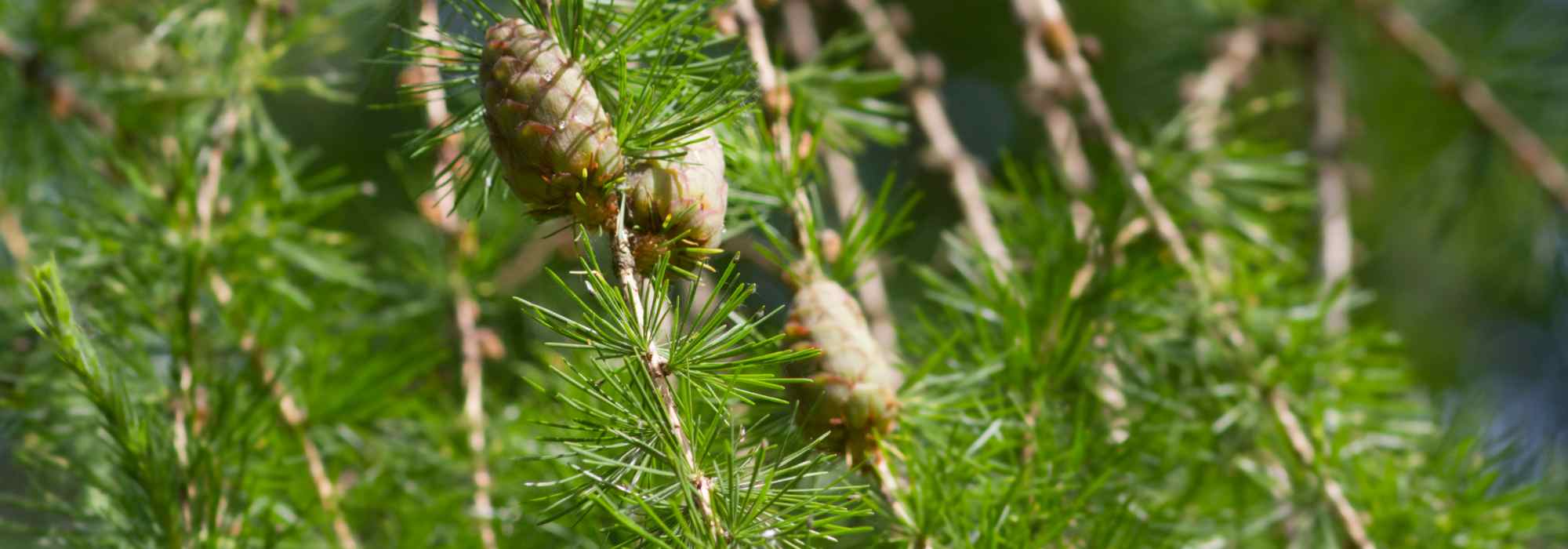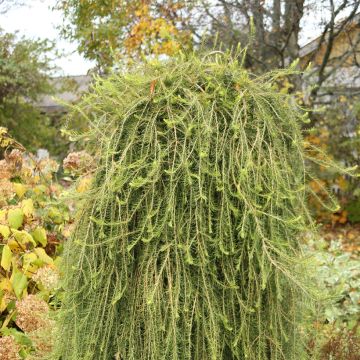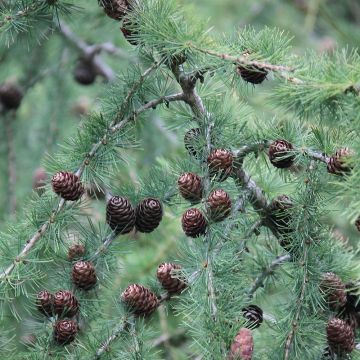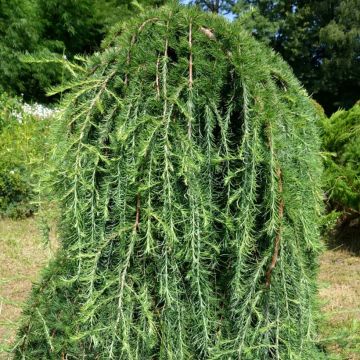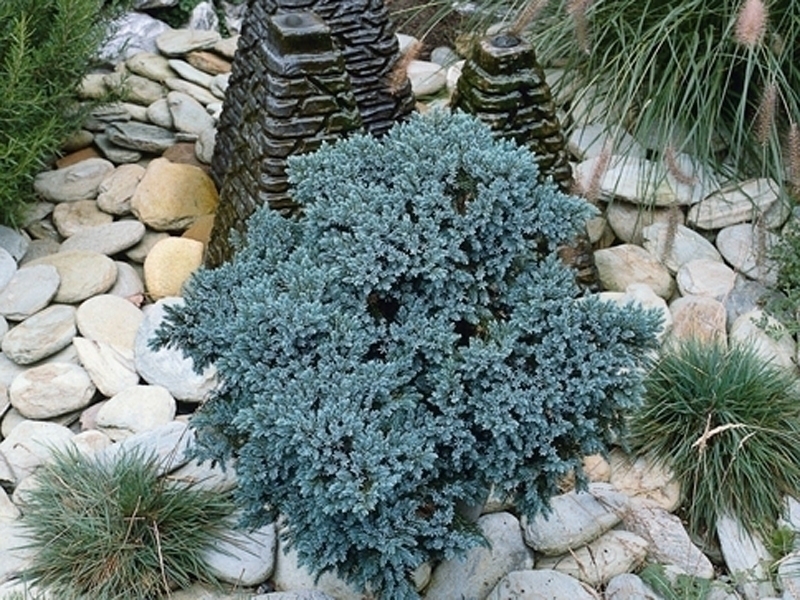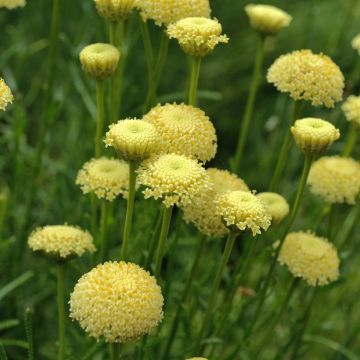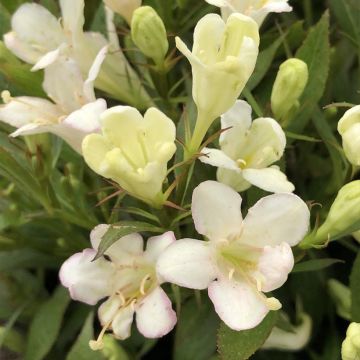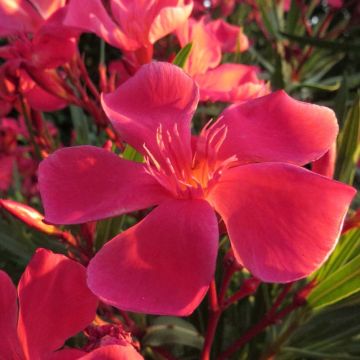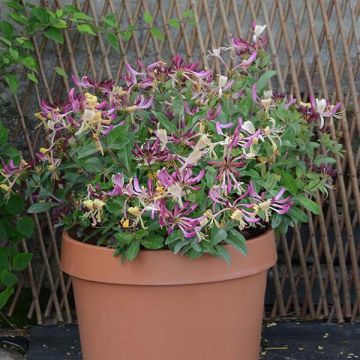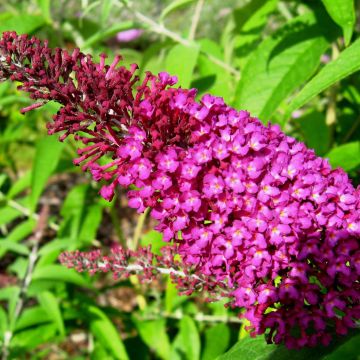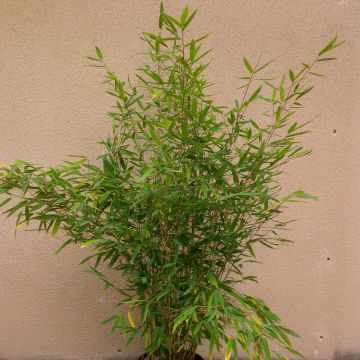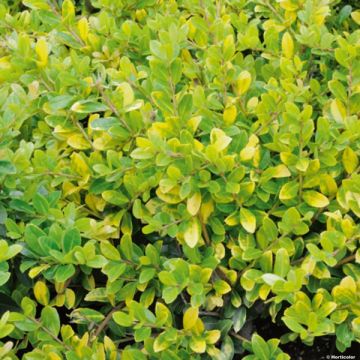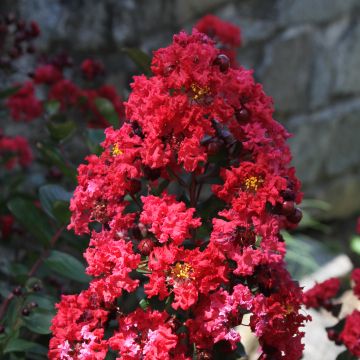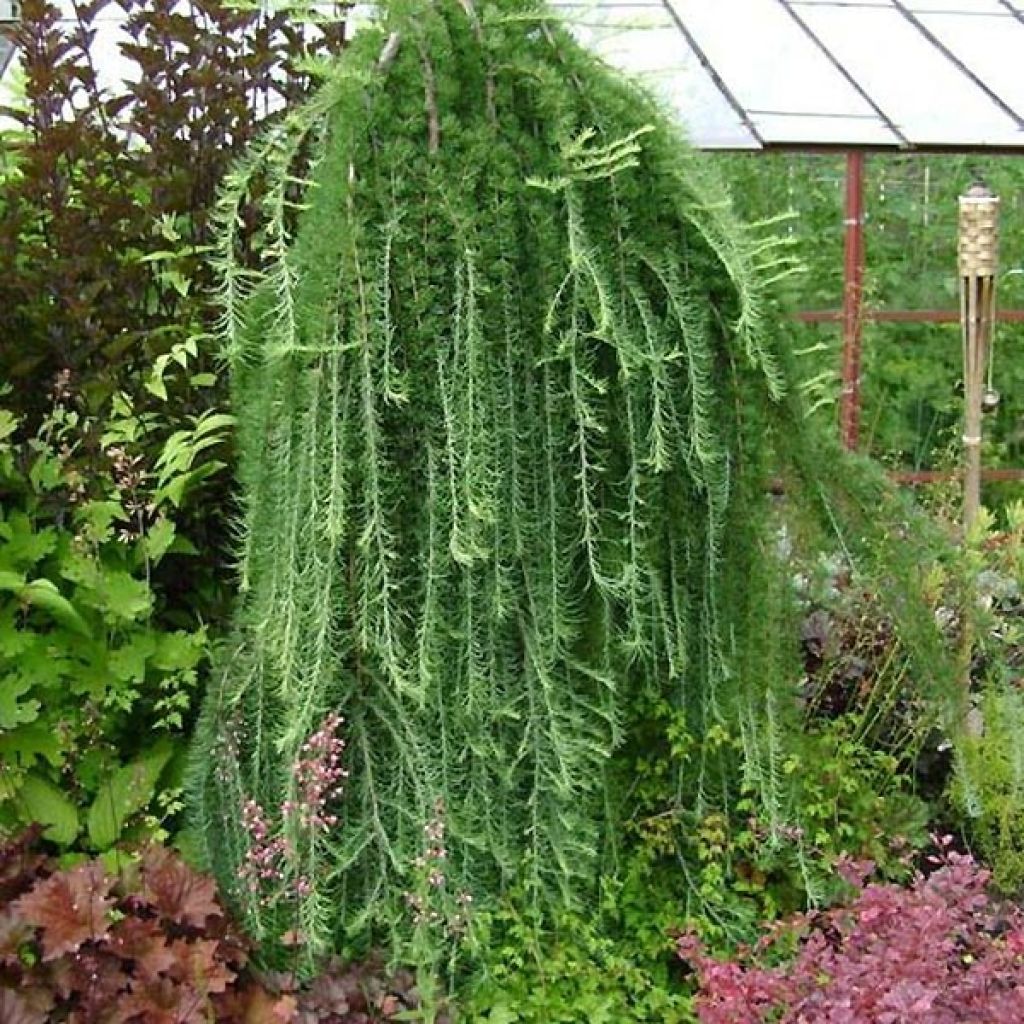

Larix kaempferi Stiff Weeping - Larch
Larix kaempferi Stiff Weeping - Larch
Larix kaempferi Stiff Weeping
Japanese Larch, Kaempfer's Larch
Special offer!
Receive a €20 voucher for any order over €90 (excluding delivery costs, credit notes, and plastic-free options)!
1- Add your favorite plants to your cart.
2- Once you have reached €90, confirm your order (you can even choose the delivery date!).
3- As soon as your order is shipped, you will receive an email containing your voucher code, valid for 3 months (90 days).
Your voucher is unique and can only be used once, for any order with a minimum value of €20, excluding delivery costs.
Can be combined with other current offers, non-divisible and non-refundable.
Home or relay delivery (depending on size and destination)
Schedule delivery date,
and select date in basket
This plant carries a 24 months recovery warranty
More information
We guarantee the quality of our plants for a full growing cycle, and will replace at our expense any plant that fails to recover under normal climatic and planting conditions.
Would this plant suit my garden?
Set up your Plantfit profile →
Description
The Larix kaempferi ‘Stiff Weeping’ is a deciduous dwarf conifer, with a trailing habit that barely exceeds 2 m (6 ft 7 in) in height and 1 m (3 ft 4 in) in width. Its trailing branches are covered with bluish-green needles from spring to summer. It adorns itself with a magnificent golden hue in autumn, before revealing its pink-brown twigs in winter. With fairly rapid growth, it will be perfect in a small space, a flower bed, or as a standalone. Very hardy, it appreciates light, neutral to acidic, fresh soil, and a sunny exposure.
The Japanese larch, Larix kaempferi also known as Larix leptolepis is a large Japanese conifer with a conical habit that can reach 30 m (98 ft 5 in) in height, with deciduous foliage. It is native to the mountains of the Hondo Island, at an altitude between 1,300 to 2,900 m (4 ft 4 in to 9 ft 6 in), but it adapts very well to cultivation in the plains in cooler climates. It belongs to the pinaceae family, like pines, firs and spruces. It is a species very close to the European Larix decidua.
The Larix kaempheri ‘Stiff Weeping’ forms after 10 years a trailing bush of 2 m (6 ft 7 in) in height and 1 m (3 ft 4 in) in width. Its growth is quite fast for a larch. Its long ramified branches trailing down to the ground, offer a regular habit. From spring to summer, the foliage is generally bluish-green, composed of soft non-prickly needles. These are inserted in dense rosettes on the branches. This larch, like all others, takes on a magnificent golden hue in autumn. Covering its young stems, its beautiful old rose to pale brown bark is an additional asset in winter. Sometimes used as an ornament because of its rapid growth and blue foliage forms.
The Venice turpentine from the larch sap is used for its antiseptic properties but also as a medium in oil painting for its enamel effect. The larch is an important producer of honeydew in high-altitude stands, which, called the "manna of Briançon", comes from the secretion of aphids (Cinara laricis) installed on the needles. Its rot-resistant reddish-brown wood, with clear tree rings, offers a beautiful polish especially in montane individuals. This essential oil remains interesting in an oceanic climate, as it resists canker.
The 'Stiff Weeping' larch is a low-maintenance and very elegant conifer, easy to grow in a small garden, in a Japanese or exotic bed, as long as the soil remains quite fresh but drained and it is placed in a sunny exposure. It can also be adopted near an entrance, its narrow silhouette suits it well. It is also easily grown in a large pot to decorate the terrace or balcony. It will pair well with bushy or sprawling conifers. The real graphic qualities of conifers naturally impose themselves in the design of a contemporary garden, which prefers the aesthetics of shapes, silhouettes and textures to the waltz of flowerings. These plants permanently structure a bed, mark the paths, border the terrace, and easily substitute the strong presence of pruned boxwood. They associate with tousled grasses and heathers whose temperament is very complementary. The whole point is to play with volumes and colours.
Advice : Water regularly during the first two years, and in cases of prolonged drought.
Larix kaempferi Stiff Weeping - Larch in pictures
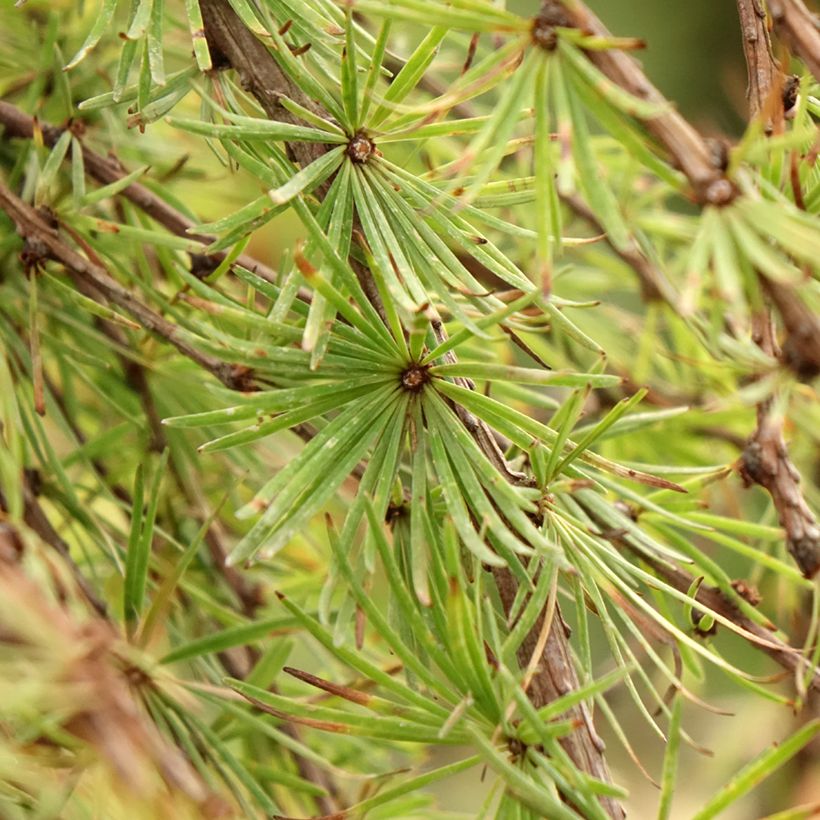



Plant habit
Foliage
Botanical data
Larix
kaempferi
Stiff Weeping
Pinaceae
Japanese Larch, Kaempfer's Larch
Cultivar or hybrid
Other Larix - Larch
View all →Planting and care
The Larix kaempferi ‘Stiff Weeping' is a plant for a fresh montane climate that fears arid situations and late frosts. It is planted from September to November in well-drained soil but retains freshness, even in poor soil, but without excess of limestone, in a sunny or semi-shaded place. A mix containing coarse sand, heathland soil and compost added to the garden soil will suit very well. If your soil is too heavy, a small trick is to plant your bush on a mound and mulch it with gravel. Water regularly during the first two years, and in cases of prolonged drought. Soak the root balls well before planting. This very hardy conifer fears waterlogged, heavy soils. Pruning is not necessary, but this conifer can perfectly be pruned to maintain or accentuate its original habit. Pruning will then take place in February-March.
The larch can be attacked by fungi of the armillaria type and ring disease (Ungulina annosa). The larch canker causes stem deformations, particularly on trees injured or sensitive to frost, therefore serious for foresters. The yellowing of the leaves in spring (Méria laricis) weakens the young plants. Pests, such as tortrix moths, affect the shoots or the foliage; aphids suck the juice of the needles and shoots causing their desiccation.
Planting period
Intended location
Care
Planting & care advice
This item has not been reviewed yet - be the first to leave a review about it.
Similar products
Haven't found what you were looking for?
Hardiness is the lowest winter temperature a plant can endure without suffering serious damage or even dying. However, hardiness is affected by location (a sheltered area, such as a patio), protection (winter cover) and soil type (hardiness is improved by well-drained soil).

Photo Sharing Terms & Conditions
In order to encourage gardeners to interact and share their experiences, Promesse de fleurs offers various media enabling content to be uploaded onto its Site - in particular via the ‘Photo sharing’ module.
The User agrees to refrain from:
- Posting any content that is illegal, prejudicial, insulting, racist, inciteful to hatred, revisionist, contrary to public decency, that infringes on privacy or on the privacy rights of third parties, in particular the publicity rights of persons and goods, intellectual property rights, or the right to privacy.
- Submitting content on behalf of a third party;
- Impersonate the identity of a third party and/or publish any personal information about a third party;
In general, the User undertakes to refrain from any unethical behaviour.
All Content (in particular text, comments, files, images, photos, videos, creative works, etc.), which may be subject to property or intellectual property rights, image or other private rights, shall remain the property of the User, subject to the limited rights granted by the terms of the licence granted by Promesse de fleurs as stated below. Users are at liberty to publish or not to publish such Content on the Site, notably via the ‘Photo Sharing’ facility, and accept that this Content shall be made public and freely accessible, notably on the Internet.
Users further acknowledge, undertake to have ,and guarantee that they hold all necessary rights and permissions to publish such material on the Site, in particular with regard to the legislation in force pertaining to any privacy, property, intellectual property, image, or contractual rights, or rights of any other nature. By publishing such Content on the Site, Users acknowledge accepting full liability as publishers of the Content within the meaning of the law, and grant Promesse de fleurs, free of charge, an inclusive, worldwide licence for the said Content for the entire duration of its publication, including all reproduction, representation, up/downloading, displaying, performing, transmission, and storage rights.
Users also grant permission for their name to be linked to the Content and accept that this link may not always be made available.
By engaging in posting material, Users consent to their Content becoming automatically accessible on the Internet, in particular on other sites and/or blogs and/or web pages of the Promesse de fleurs site, including in particular social pages and the Promesse de fleurs catalogue.
Users may secure the removal of entrusted content free of charge by issuing a simple request via our contact form.
The flowering period indicated on our website applies to countries and regions located in USDA zone 8 (France, the United Kingdom, Ireland, the Netherlands, etc.)
It will vary according to where you live:
- In zones 9 to 10 (Italy, Spain, Greece, etc.), flowering will occur about 2 to 4 weeks earlier.
- In zones 6 to 7 (Germany, Poland, Slovenia, and lower mountainous regions), flowering will be delayed by 2 to 3 weeks.
- In zone 5 (Central Europe, Scandinavia), blooming will be delayed by 3 to 5 weeks.
In temperate climates, pruning of spring-flowering shrubs (forsythia, spireas, etc.) should be done just after flowering.
Pruning of summer-flowering shrubs (Indian Lilac, Perovskia, etc.) can be done in winter or spring.
In cold regions as well as with frost-sensitive plants, avoid pruning too early when severe frosts may still occur.
The planting period indicated on our website applies to countries and regions located in USDA zone 8 (France, United Kingdom, Ireland, Netherlands).
It will vary according to where you live:
- In Mediterranean zones (Marseille, Madrid, Milan, etc.), autumn and winter are the best planting periods.
- In continental zones (Strasbourg, Munich, Vienna, etc.), delay planting by 2 to 3 weeks in spring and bring it forward by 2 to 4 weeks in autumn.
- In mountainous regions (the Alps, Pyrenees, Carpathians, etc.), it is best to plant in late spring (May-June) or late summer (August-September).
The harvesting period indicated on our website applies to countries and regions in USDA zone 8 (France, England, Ireland, the Netherlands).
In colder areas (Scandinavia, Poland, Austria...) fruit and vegetable harvests are likely to be delayed by 3-4 weeks.
In warmer areas (Italy, Spain, Greece, etc.), harvesting will probably take place earlier, depending on weather conditions.
The sowing periods indicated on our website apply to countries and regions within USDA Zone 8 (France, UK, Ireland, Netherlands).
In colder areas (Scandinavia, Poland, Austria...), delay any outdoor sowing by 3-4 weeks, or sow under glass.
In warmer climes (Italy, Spain, Greece, etc.), bring outdoor sowing forward by a few weeks.






























